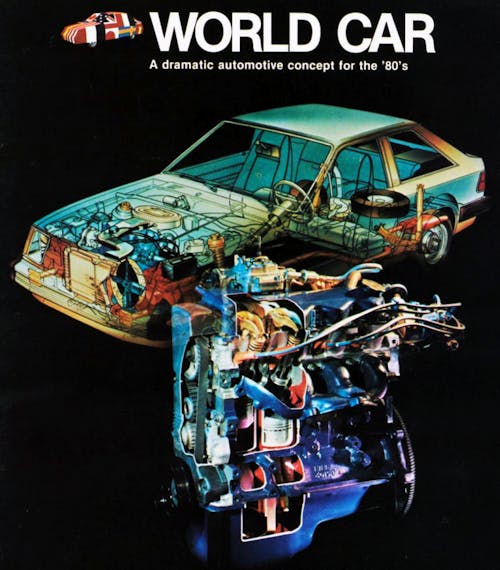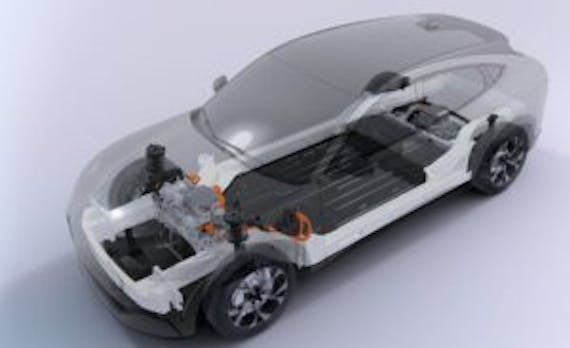Media | Articles
Piston Slap: Water pump nightmares from engine timing torture

James writes:
Sajeev, the quintessential Ford dude! My wife has a 2018 Ford Explorer Limited with 52,000 miles. It’s been good so far. I’ve heard horror stories about the N/A 3.5 V-6 having catastrophic water pump leak/failure issues. A few questions:
- Is it buried down in the “V”?
- Are there warning signs?
- Will this happen?
- Should we sell before this happens?
- When will it happen?
Sajeev answers:
This is a fantastic question with ramifications as deep as the location of the water pumps in these 3.5-liter Cyclone V-6 engines. The economic differences between an OEM’s production costs and the individual owner’s service expenses are somewhat fascinating.

But before I go into a huge nerd hole trying to convince you of that, let’s quickly answer James’ questions.
- You bet! Ford put the water pump inside the timing cover, spinning it via the timing chain on front-wheel-drive vehicles.
- Yes, it’s quite expensive to repair ($2000 or more), unless you can do things like dropping a vehicle’s front subframe in your own garage.
- This applies to both naturally aspirated and EcoBoost 3.5-liter applications.
- This doesn’t apply to the Mustang or F-150, as these have externally mounted water pumps like traditional American engines.
- You are supposed to see a leak near the alternator, and it’s usually not too late if you keep an eagle eye on that area.
- All water pumps fail eventually, but regular coolant services as per owner’s manual will extend the lifetime significantly.
- People kick the can down the road for many reasons, and this is a darn good one. Just be straight up with the next owner, or trade it in and make it the dealership’s problem. (They lowball used cars for good reason!)
- Given your mileage, if you flush the cooling system immediately and keep an eye on that alternator leak hole (technical term) you aren’t likely to have the problem for well over 100,000 miles.
- The informative YouTube video below also mentions doing an oil analysis, if you really want to be ahead of the game. While I pinned it to the most enlightening part, watch the whole thing for more details.
And this is where we go deeper, considering the customer’s tolerance for repair bills years after the warranty expires. Who out there actually wants to service their coolant regularly, much less spring for an oil analysis on waste motor oil?
There’s a better way to force coolant services: by using a replaceable timing belt instead of a timing chain. That’s what countless belt-driven imports from the last 40+ years relied on, and it’s contributed greatly to their reputation for durability over American brands that avoid timing belts. Put another way, neglect a “not mandatory” coolant service in a 1990 Essex Continental and you quickly blow the gaskets between its aluminum heads and iron block. Bad news, but neglecting coolant in a 1990 Lexus LS400 has zero downsides because a blown timing belt ensures regular coolant servicing. I’m not suggesting the Lexus LS wasn’t a tour de force in luxury car quality, just that the delta between them and others doesn’t reflect its need for mandatory servicing.

It’s as if Ford gets timing systems and internal water pumps wrong far too frequently. Like back in 1981, when the Ford Escort “World Car” utilized Ford of Europe’s CVH engine. It, like the Pinto before it, had a timing belt. Unlike the Pinto, it was an interference engine. Ford’s American clientele clearly didn’t learn from blowing belts on Pintos, forcing the automaker to make broken-timing-belt-friendly pistons by 1983. The clarion call likely went like this:
“I’m not gonna service my Ford like some Yuppie European Weenie, you can’t make me, and your dealerships better be nice to me when I break something!”
But the 3.5-liter mill is nothing like yesteryear’s Escorts, because adding timing chains to an internal water pump makes it bit more durable. But it comes at major expense for the poor sap who owns it 8+ years into ownership, because labor costs are orders of magnitude more than servicing an old ‘scort in modern times; I got an entirely new cooling system, new power steering pump/hoses, new alternator, new A/C compressor, and a new timing belt in my 1982 Ford EXP for less than the price of a water pump swap in a modern 3.5-liter Ford.

It’s a shame, because the 3.5-liter Ford coulda been just as durable as the previous 3.0-liter Duratec V-6 found in older Ford Fusions, Five Hundreds, and Freestyles. External water pumps ensured the 3.0’s rotating assembly was essentially bulletproof, making for a compelling purchase at the bottom of the depreciation curve. But the “quintessential Ford dude in me” reminds everyone that Dearborn wasn’t the only manufacturer to do something this ridiculous. Chrysler did it with the 2.7-liter V-6, and several VW engines followed suit.
But they added a plot twist: VW’s internal water pumps came with the added bonus of plastic impellers. VW was successfully hit with lawsuits, but similar efforts against Ford’s superior-ish design have yet to succeed.

It’s a shame that somewhere in the hallowed halls of these automaker’s office buildings are people thinking of ways to advance the automobile at the expense of longterm ownership. This is a terrible way to treat your brand, but one perk of the EV revolution (as it were) is that all automakers are slowly adapting to the electric vehicle’s simple powertrain architecture. There’s so much less to screw up in an EV, especially compared to a plastic impeller VW or a 3.5-liter FWD Ford product.
The only flaw in my logic is the EV’s battery, but it’s never a hidden “gotcha” like these awful water pumps. And how great is that?
Have a question you’d like answered on Piston Slap? Send your queries to pistonslap@hagerty.com—give us as much detail as possible so we can help! Keep in mind this is a weekly column, so if you need an expedited answer, please tell me in your email.
***
Marketplace
Buy and sell classics with confidence
Check out the Hagerty Media homepage so you don’t miss a single story, or better yet, bookmark it. To get our best stories delivered right to your inbox, subscribe to our newsletters.















Belts are not always the answer.
We had a Fiat that needed belt changes at 25k mile not 26k as it would lead to bent valves.
I went though this with my wife’s 16 Explorer. We bought it (from a dealer, thankfully), had it for less than a week and the oil was full of coolant. The dealer towed it in, and spent $4000 of their own money (warranties are wonderful things) and it was fixed. Couldn’t have been better timing, no pun intended.
I read this entire article and looked at the pictures and all I got was “don’t buy a Ford”. That’s probably extreme, but I think I’ll follow it anyway.
And the auto manufacturer that does it all perfectly is…………………………. ?
One that is out of business so we can’t blame them for anything. I vote for Tucker, maybe Oldsmobile.
Dunno. That’s why I keep reading these columns, trying to discover the answer to that question. 😊
There is no answer, but you still need to keep on reading. 😇😇😇😇😇
FORD= Fix or repair, Daily, or it will, or it will be found on road dead. i’m with you Dub; It’s either Chevy Olds or Pontiac.
I don’t really think water pump woes are a valid pitch for EVs. I just saw a video where a guy junked a fairly new EV because it was just out of warranty and the replacement cost of the failed battery exceeded the value of the car
Ya know, I was at a Christmas party over the weekend and a friend of a friend apparently has been having multiple problems with the battery in his 2-3 year old EV, and none of it could have been anticipated by the owner. Or me for that matter, so yeah, I think you are right. But I still hate crappy water pump designs that hurt the owner at the bottom of the depreciation curve.
I first ran across this phenomenon with my mother’s Neon many suns and moons ago when I discovered that her coolant leak was coming out of the timing cover. I have never been a fan of this concept either, but even on transverse engines, it is not the end of the world… unless it is the dreaded interference engine… which is a bad design in itself
Name the EV manufacturer please. This column is consistently brand-specific when talking problems. There’s no reason to change that now, unless you’re planning further research and perhaps a column later.
Fair point, it is a 2022 Tesla Model Y. I am looking into it, but coming to any sort of conclusion with the sparse anecdotal internet data I am finding isn’t very convincing right now.
Then there is the Volvo 240/740/940 – “Darn water pump is leaking – better watch it for a year and see if it gets worse”. After all, it takes well over an hour to replace.
What a terrible water pump design. No wonder the call it the Ford Exploder!
Having replaced more than I can count of these water pumps I would also definitely recommend replacing the timing chain as well. Even on vehicle with 50,000 to 60,000ish miles on them. The chain will stretch and for an added 60ish bucks or so its cheap insurance. I’ve taken chains off of many of these with 50ish thousand miles and have laid the chain flat on a workbench and the amount of flex compared to the new chain is substantial. Also, I thought everybody knew FORD stands for First On Race Day. Just ask Ryan Blaney.
Excellent advice re: the timing chain. The Ford 3.5 doesn’t seem as bad as GM’s 3.6 in this regard, but when in Rome…